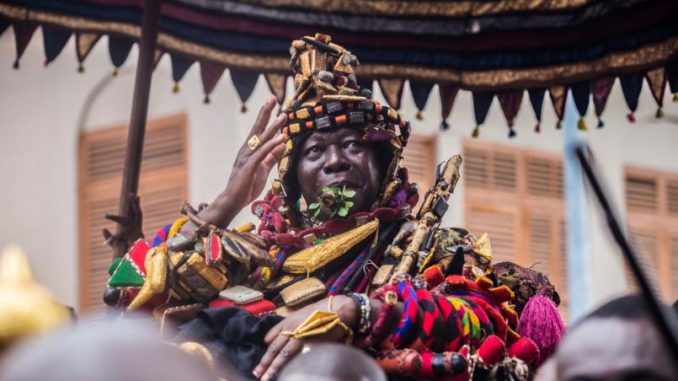
The monarch of the Ashanti Kingdom of Ghana, Otumfuo Osei Tutu II, has donned the sacred traditional smock for the final funeral rites of his late mother and Queen Mother of the Kingdom, Nana Afia Serwaa Ampem II, who died a year ago.
The centuries-old smock was last worn by the King some 18 years ago during his enstoolment at Manhyia, in the heart of Kumasi, the capital of the Ashanti Region.
Also called ‘Fuugu’ or ‘Batakari’ within the Ghanaian community, the smock is a loose garment, traditionally hand-woven by the people of northern Ghana and worn on various occasions. The sacred ‘Batakari’ traces its root to the north during the time of the Ashanti conquest of the region.
Known as the ‘Batakari Kesee’, meaning the big smock, this sacred armor attire is kept and worn by the Ashanti King only on special traditional occasions. The dress, designed to protect the King is specially made and decorated with gold and amulets. It is the center of attention whenever it is worn by the King.
The big smock is deemed holy and dignified as it is never washed — to maintain its glory and significance during times of war.
Per the customs and traditions, the King wore the dress before mounting his palanquin during the final funeral rites of his mother. The Kumasi township stood still, as all shops were closed in observance of the traditional rites. The Otumfuo danced as he was carried through the streets of the city.
The legendary Queen Mother and warrior, Yaa Asantewaa, wore a similar military smock to fight the British in 1900.
In Ghana, as well as in some other parts of Africa, the smock plays a significant cultural role. They are worn to signify social status and to appear fashionable. It is a trending attire in the Ghanaian fashion industry.
BY DANIEL ABUGAH
Source
